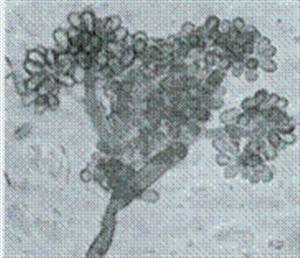 Results
Results
Lung Fibrosis in Hypersensitivity Pneumonitis
Lung fibrosis of grade 2 was found in 9 of 17 patients (fibrosis group), 5 patients with the bird fanciers disease, and 4 of 6 patients with HP of unknown antigen (Table 1). The other eight patients showed no lung fibrosis (nonfibrosis group). All cases evaluated were categorized into grade 2 for cellular infiltration at the symptomatic phase when CT scans and other evaluations were made (Table 1). Figure 1 displays a CT scan from a patient in the nonfibrosis group (Fig 1A) and one from the fibrosis group (Fig 1B). Figure 2 shows the histologic findings of the TBLB materials of the same cases shown in Figure 1. The presence of fibrosis was in agreement with CT scan and pathologic condition in all cases, although the extension of fibrosis was hardly evaluated by histologic examinations. Lung fibrosis assessed by CT scans was categorized into grade 2 in all cases suggesting that lung fibrosis associated with HP was difiuse. However, the fibrosis had a tendency to be localized in the subpleural lesion of dorsal segments (subpleural curvilinear shadow) in some cases at the later stage of the disease as observed in lung fibrosis of other lung diseases. All cases of HP without lung fibrosis were also confirmed by histologic examination of TBLB specimens except for two cases of summer-type HP.
Table 1—Cases of Hypersensitivity Pneumonitis (HP)
| Group | Disease | Patient No. | Age, yr | Onset | CT Grade | Histologic Findings (TBLB) | CD4/8Ratio | |||
| Cell Infiltration | Fibrosis | Cell Infiltration | Fibrosis | Granuloma | ||||||
| Fibrosis group | BFL | 1 | 61 | I | 2 | 2 | + | + | – | 0.43 |
| BFL | 2 | 62 | I | 2 | 2 | + | + | + | 1.75 | |
| BFL | 3 | 67 | I | 2 | 2 | + | + | – | 3.10 | |
| BFL | 4 | 50 | I | 2 | 2 | + | + | – | 0.77 | |
| BFL | 5 | 40 | I | 2 | 2 | + | + | – | 0.51 | |
| AU | 6 | 80 | I | 2 | 2 | ± | + | + | 3.10 | |
| AU | 7 | 75 | I | 2 | 2 | + | + | – | 3.70 | |
| AU | 8 | 54 | I | 2 | 2 | ± | + | – | 1.16 | |
| AU | 9 | 61 | I | 2 | 2 | + | + | + | 8.80 | |
| Nonfibrosis group | SHP | 10 | 33 | A | 2 | 0 | + | – | + | 0.30 |
| SHP | 11 | 57 | A | 2 | 0 | + | – | + | 0.48 | |
| SHP | 12 | 40 | A | 2 | 0 | + | – | + | 0.44 | |
| SHP | 13 | 50 | A | 2 | 0 | ND | ND | ND | 0.28 | |
| SHP | 14 | 59 | A | 2 | 0 | ND | ND | ND | 0.28 | |
| IHP | 15 | 41 | A | 2 | 0 | + | – | – | 0.20 | |
| AU | 16 | 67 | A | 2 | 0 | ± | – | – | 0.40 | |
| AU | 17 | 63 | A | 2 | 0 | ± | – | – | 0.08 | |
Figure 1. Computed tomographic scans of nonfibrosis group (A, left) and fibrosis group (B, right). A, A representative case of nonfibrosis group. Difiuse small nodular densities were observed. B, A representative case of fibrosis group. In addition to difiuse small nodular densities, linear shadows (in other cases also reticular shadows) indicating fibrotic changes were present.
Figure 2. Histologic features of TBLB specimens of nonfibrosis group (A, left) and fibrosis group (B, right). A, Histologically no fibrosis was observed. Granulomatous lesions with cellular infiltration with predominantly lymphocytes and less histiocytes in peribronchiolar areas and alveolar septa. This is the same case as shown in Figure 1A (hematoxylin-eosin). B, Fibrosis, which was confirmed by histologic examinations, was evident extending from the peribronchiolar areas to the alveolar septa accompanied by a predominant lymphocyte infiltration. Alveolar walls were thickened and accompanied by a little lymphocyte infiltration. This is the same case as shown in Figure IB (hematoxylin-eosin, original magnification X 100).
Category: Pulmonary disease
Tags: hypersensitivity, hypersensitivity pneumonitis, pulmonary fibrosis, pulmonary function
© 2011 - 2024 buy-asthma-inhalers-online.com. All rights reserved.